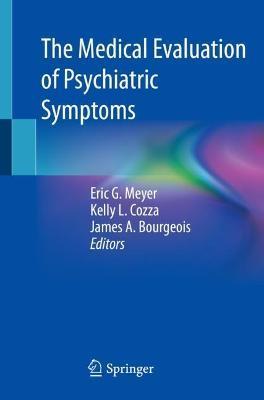The Medical Evaluation of Psychiatric Symptoms

The Medical Evaluation of Psychiatric Symptoms
Every DSM-5 diagnosis includes an exclusion criterion that the disorder is not better explained by a medical condition. Meeting this criterion can be difficult for a variety of reasons. The psychiatric signs and symptoms of medical disorders are not commonly emphasized in medical textbooks. Further, illness scripts for medical diagnoses do not often overlap with psychiatric disorders, making it difficult to know what medical conditions should be ruled out. For example, irritability is a common symptom in polycystic ovarian disorder, but PCOS is rarely on the differential for irritability. Similarly, while hypothyroidism is commonly linked to the illness script of depression, patients with MDD may be just as likely to have diabetes - an infrequently considered diagnosis for depression. "Buzzword" medical conditions that are commonly prioritized in medical student training can negatively influence classic illness scripts. While such diagnostic possibilities make for good multiple-choice questions, they are frequently rare and may inadvertently undermine important common possibilities. For example, a patient with chest pain in the context of anxiety is more likely to have asthma, acute coronary syndrome, or even a pulmonary embolism than pheochromocytoma. In a recent white paper issued by the American Psychiatric Association, it has urged psychiatrists to better advocate for patients with severe mental illness who often lack access to primary care. But some psychiatrists may be unfamiliar with physical exam maneuvers and medical review of systems (ROS) questions. Complex medical systems may delegate the physical exam to physicians outside of psychiatry, or there may be a temptation to rely on the emergency room's "medical clearance" as a "medical rule-out." Both can result in decreased familiarity with physical exam techniques previously mastered as part of medical school. A cursory review of the physical exam maneuvers and concise symptom-based medical ROS lists can alleviate some of these concerns. This book is intended to provide psychiatrists and physicians who routinely evaluate psychiatric symptoms with the tools needed to rule out medical conditions that could be causing those symptoms. It will start with an introduction that reviews why the text is needed and potential larger gaps in training that might contribute to the necessity for such a text. Each chapter thereafter will focus on a specific symptom. Each symptom will be defined to ensure ac
PRP: 1115.91 Lei
Acesta este Pretul Recomandat de Producator. Pretul de vanzare al produsului este afisat mai jos.
1004.32Lei
1004.32Lei
1115.91 LeiLivrare in 2-4 saptamani
Descrierea produsului
Every DSM-5 diagnosis includes an exclusion criterion that the disorder is not better explained by a medical condition. Meeting this criterion can be difficult for a variety of reasons. The psychiatric signs and symptoms of medical disorders are not commonly emphasized in medical textbooks. Further, illness scripts for medical diagnoses do not often overlap with psychiatric disorders, making it difficult to know what medical conditions should be ruled out. For example, irritability is a common symptom in polycystic ovarian disorder, but PCOS is rarely on the differential for irritability. Similarly, while hypothyroidism is commonly linked to the illness script of depression, patients with MDD may be just as likely to have diabetes - an infrequently considered diagnosis for depression. "Buzzword" medical conditions that are commonly prioritized in medical student training can negatively influence classic illness scripts. While such diagnostic possibilities make for good multiple-choice questions, they are frequently rare and may inadvertently undermine important common possibilities. For example, a patient with chest pain in the context of anxiety is more likely to have asthma, acute coronary syndrome, or even a pulmonary embolism than pheochromocytoma. In a recent white paper issued by the American Psychiatric Association, it has urged psychiatrists to better advocate for patients with severe mental illness who often lack access to primary care. But some psychiatrists may be unfamiliar with physical exam maneuvers and medical review of systems (ROS) questions. Complex medical systems may delegate the physical exam to physicians outside of psychiatry, or there may be a temptation to rely on the emergency room's "medical clearance" as a "medical rule-out." Both can result in decreased familiarity with physical exam techniques previously mastered as part of medical school. A cursory review of the physical exam maneuvers and concise symptom-based medical ROS lists can alleviate some of these concerns. This book is intended to provide psychiatrists and physicians who routinely evaluate psychiatric symptoms with the tools needed to rule out medical conditions that could be causing those symptoms. It will start with an introduction that reviews why the text is needed and potential larger gaps in training that might contribute to the necessity for such a text. Each chapter thereafter will focus on a specific symptom. Each symptom will be defined to ensure ac
Detaliile produsului









